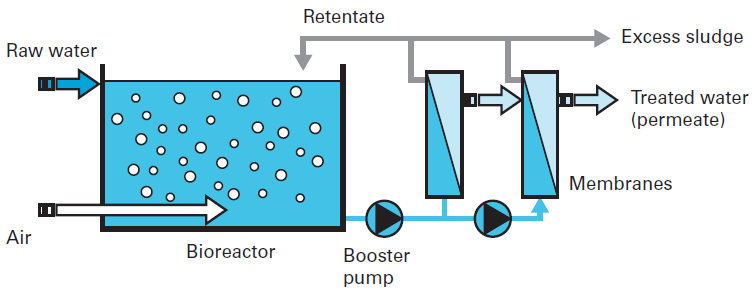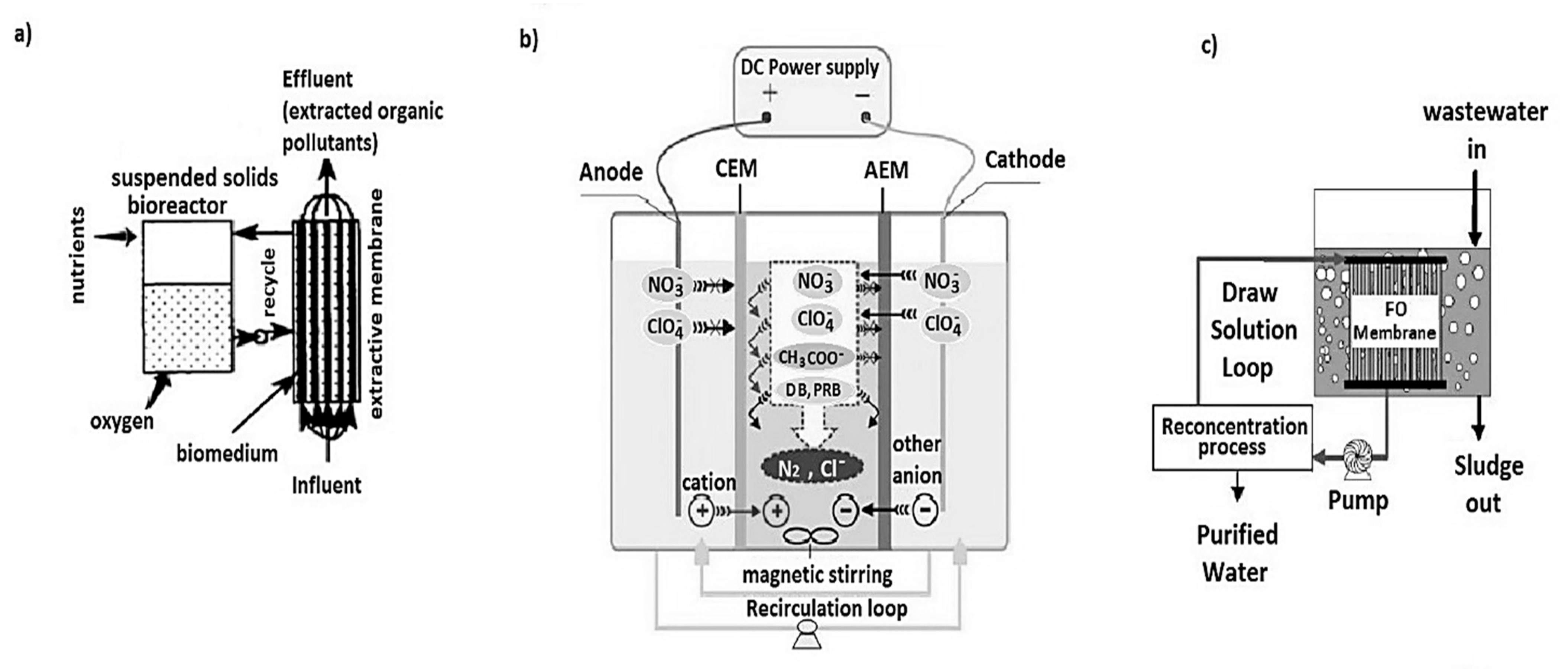Membrane Bioreactor as a Sustainable Solution for High-Volume Wastewater Treatment
Membrane Bioreactor as a Sustainable Solution for High-Volume Wastewater Treatment
Blog Article
Comprehending Membrane Layer Bioreactors: The Future of Wastewater Treatment
Membrane layer bioreactors (MBRs) stand for a noteworthy innovation in the area of wastewater treatment, incorporating biological procedures with sophisticated membrane layer filtering to improve effluent quality. As worldwide water scarcity and rigorous regulative frameworks become significantly pushing issues, MBR innovation offers an efficient reaction via its ability to minimize impact and optimize source recovery. However, the adoption of MBRs is not without its obstacles, which warrant cautious factor to consider. What are the key elements affecting their execution and long-lasting practicality in numerous contexts? The answers may reshape our strategy to wastewater administration.
What Are Membrane Bioreactors?

The core components of MBR systems consist of a bioreactor where microbial activity takes place and a membrane layer unit that filters the combined liquor. This double performance enables the simultaneous degradation of organic issue and solid-liquid separation in a solitary action. MBRs can operate in both immersed and outside arrangements, with submerged systems being extra typical as a result of their portable design and functional effectiveness.
The fostering of MBR innovation has gotten traction in different applications, ranging from municipal wastewater therapy to commercial effluent monitoring. MBRs are specifically advantageous in circumstances where room is restricted or rigid effluent quality standards have to be fulfilled. By keeping a high focus of microorganisms within the bioreactor, MBRs enhance the degradation of organic pollutants, therefore yielding greater treatment performances contrasted to conventional methods.
Key Advantages of MBR Technology
The assimilation of biological treatment with membrane purification in MBR systems supplies countless advantages that establish it apart from traditional wastewater therapy approaches. One of the main benefits is the boosted effluent top quality. MBRs efficiently eliminate suspended pathogens and solids, attaining higher levels of purification that meet rigid discharge standards and assist in water reuse applications.

An additional considerable benefit is the minimized sludge manufacturing. MBR systems create much less excess sludge, bring about lower disposal prices and a reduction in environmental impact. The shut nature of the membrane layer system lessens the risk of smell emissions and enhances overall process control.
Lastly, MBRs are flexible and adaptable, making them suitable for different wastewater kinds, including industrial and metropolitan sources. The capacity to incorporate with innovative treatment innovations even more improves their performance, making MBRs a promising remedy for the future of wastewater monitoring.
Challenges and Limitations of MBRs
While MBR modern technology provides numerous benefits, it also encounters several challenges and constraints that can influence its widespread adoption. One significant difficulty is the high capital websites and functional prices linked with MBR systems. The initial investment for membrane products and the necessary framework can be substantial, making it less available for smaller sized communities or markets.
Furthermore, membrane fouling continues to be an essential problem that can decrease system efficiency and boost maintenance needs. Fouling happens when solids, raw material, or microorganisms gather on the membrane surface area, causing reduced leaks in the structure and requiring constant cleaning or substitute.
One more constraint includes the complexity of the innovation. MBR systems require proficient personnel for procedure and maintenance, which can be an obstacle in regions with restricted technical know-how. Additionally, the disposal of invested membranes provides ecological issues, over at this website as the products are commonly not biodegradable and can contribute to waste administration obstacles.
Lastly, while MBRs can efficiently deal with a large range of wastewater, they might not be ideal for all applications, particularly those with high concentrations of fats, oils, and greases, demanding more research and development to attend to these constraints.
Applications of Membrane Bioreactors
In various industries, membrane layer bioreactors (MBRs) have actually arised as a functional solution for wastewater treatment (Membrane Bioreactor). Their applications cover local, commercial, and farming setups, showcasing their flexibility and effectiveness in diverse environments. In community wastewater treatment plants, MBRs substantially boost effluent top quality, permitting water reuse and lowering the ecological influence of released wastewater
Industrially, MBRs are used in food and drink handling, textile manufacturing, and pharmaceutical production, where they efficiently treat high-strength waste streams. Their ability to deal with varying and varying loads contaminant concentrations makes them specifically useful in these industries. Additionally, MBRs assist in the elimination of microorganisms, suspended solids, and raw material, contributing to compliance with stringent discharge regulations.
In farming, MBRs are significantly utilized for treating agricultural drainage and animals wastewater, allowing the healing of nutrients for fertilizer production. They likewise help in the therapy of greywater for irrigation, advertising lasting water monitoring methods.
The flexibility of MBRs is additional confirmed by their integration with various other modern technologies, such as anaerobic digestion and advanced oxidation procedures, improving overall efficiency and source recovery in wastewater therapy systems.
The Future of Wastewater Therapy
Developments in technology and an expanding emphasis More Help on sustainability are forming the future of wastewater therapy. Membrane bioreactors (MBRs) exhibit this change by integrating organic therapy processes with membrane layer filtering, resulting in high-grade effluent appropriate for reuse. The trend in the direction of circular economic situations is triggering facilities to embrace MBRs for their capacity to recuperate sources, such as water and nutrients, from wastewater.
Developments in membrane layer materials and configuration are improving the efficiency and durability of MBR systems, reducing functional costs and power consumption. Smart innovation integration, including real-time surveillance and automated control systems, is additional maximizing performance and allowing anticipating maintenance, therefore decreasing downtime.
Furthermore, governing pressures and social assumptions are pressing sectors and municipalities to embrace even more sustainable practices. Membrane Bioreactor. The change in the direction of decentralized wastewater treatment solutions is getting grip, enabling local therapy that reduces transportation expenses and power usage
Conclusion
Membrane layer bioreactors (MBRs) stand for a transformative strategy to wastewater therapy, integrating biological processes with advanced membrane layer technology. The advantages of MBRs, including improved effluent top quality, lowered spatial requirements, and lower sludge production, place them as a sensible remedy amid growing urbanization and stricter ecological laws. Despite existing challenges, the continued innovation in membrane materials and functional strategies promises to reinforce the efficacy and adoption of MBRs, ensuring their critical function in the future of sustainable wastewater administration.
Membrane bioreactors (MBRs) represent a noteworthy development in the field of wastewater therapy, incorporating biological processes with innovative membrane layer purification to improve effluent high quality.Membrane bioreactors (MBRs) combine organic therapy processes with membrane purification to effectively deal with wastewater.The assimilation of biological treatment with membrane layer filtering in MBR systems offers many advantages that set it apart from typical wastewater therapy techniques. Membrane bioreactors (MBRs) exhibit this change by incorporating biological treatment procedures with membrane filtration, resulting in high-grade effluent ideal for reuse.Membrane bioreactors (MBRs) stand for a transformative technique to wastewater treatment, incorporating organic processes with innovative membrane technology.
Report this page